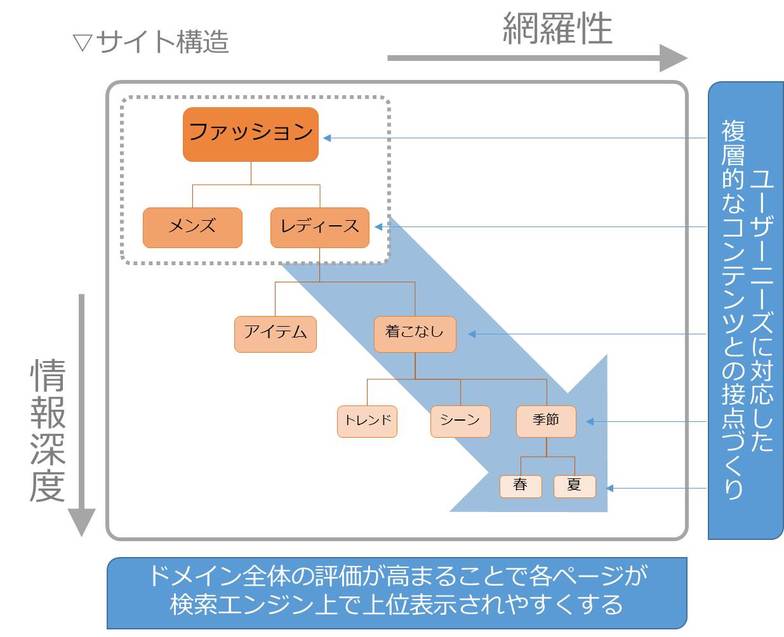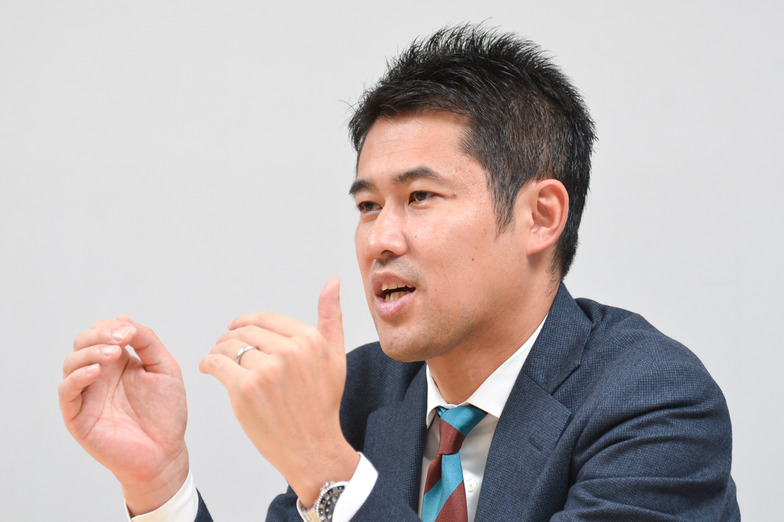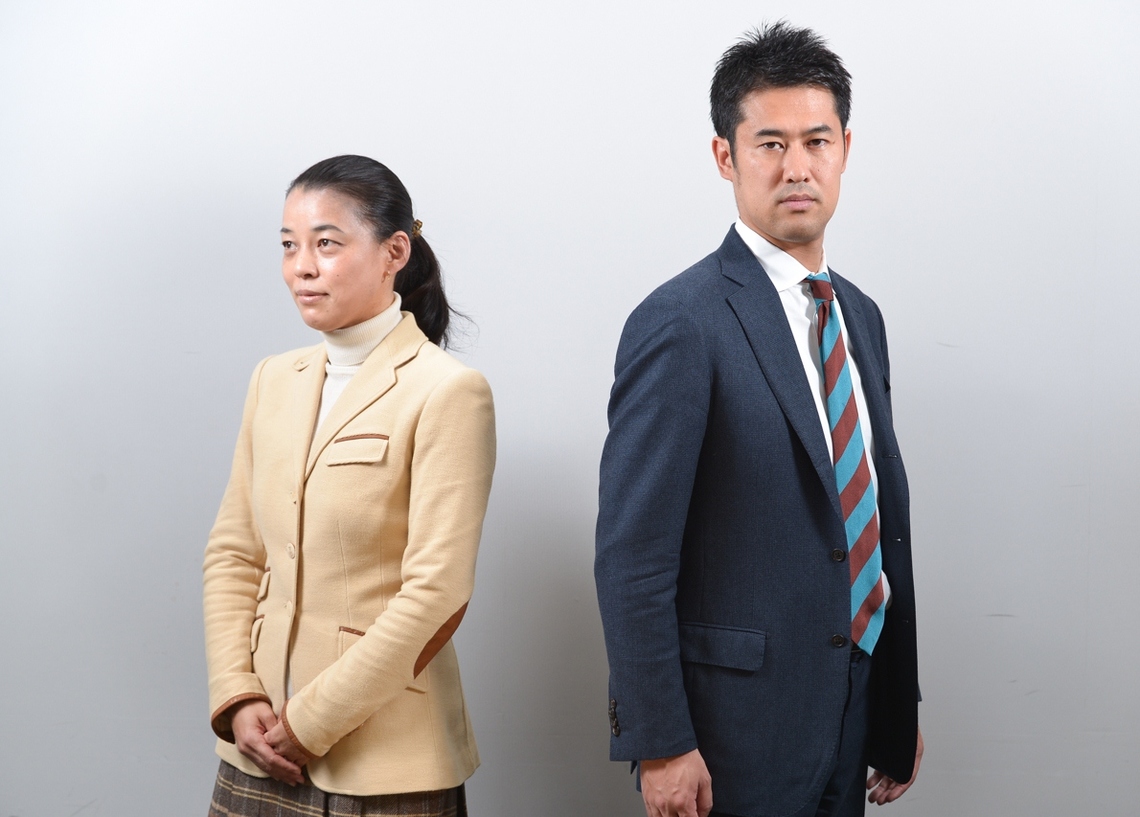Gunji: Actually, after running content marketing for about a year, you start to understand various things. Like what happens during certain seasons, or what kind of content tends to become popular. For those already doing it, I think experience is accumulating. I hear you've also learned things after running this "Web Dentsu Inc." for about a year. But, you know, you might be thinking: "I put out content, but what exactly were the results?" or "I worked to increase page views, but what was the original purpose again?" Or, if you can't show what it contributes to, you can't secure next year's budget. I'm talking about very real issues here, and I think many people feel this way.
Sugiura: That's right. And to be a bit of a downer, the reality is that achieving results takes considerable time. First, you need a certain stockpile of content to create multiple touchpoints. It's like building relationships – trust develops through repeated interactions. Without multiple points of contact with the company or product, you won't see significant metrics improve.
Take an apparel e-commerce site as an example. Beyond just product categories like men's or women's and the associated item introductions, if it also comprehensively covers feature content like styling, occasions, and trends, users can discover relevant pages at various touchpoints, not just through search. Initially, their engagement might be casual browsing on their phone during commutes, with no immediate purchase intent. Users who research spring items or engage with content on styling for different occasions gradually develop an interest in the products and begin considering a purchase.
Just as users prefer sites that are comprehensive and offer deep information, search engines (like Google) also value such sites.
As content expands, not only do user touchpoints naturally increase, but the overall domain value also rises. This creates a positive SEO spiral: even a single page of information becomes easier to rank higher in search engine results.

Fig. Expected Effects of SEO & Organic Traffic from Content Expansion
~Example: Apparel E-commerce Site~
Beyond this, other metrics for evaluating content include page views, dwell time, conversion rates, and referral traffic. These metrics don't necessarily need to be confined to owned media; they're starting to integrate with other real-world data. For instance, through what's called a single-source panel, TV exposure, web exposure, and in-store purchases can be linked together. In commodity sectors like daily necessities, it's now possible to verify whether people who viewed the website versus those who didn't actually purchase in-store.
Gunji: That will become fully established in 2015, right?
Sugiura: We'll see such cases emerge. It's an area we're focusing on—how digital customer touchpoints influence in-store purchases. Consequently, while content marketing will form the foundation for such initiatives, it will also become less amenable to manipulation.
Gunji: That means content "evaluation" becomes highly multifaceted, right? The same content can be evaluated completely differently depending on the metrics and how the yardstick is applied.
Sugiura: I always work backward from the ultimate outcome—sales—to determine what constitutes an intermediate metric. For example, if we can see the relationship between a certain percentage increase in purchase intent and how much product sells in-store, then "purchase intent" becomes a valid intermediate metric (KPI). Put another way, we can project: if we drive X number of people to the website, prompt an attitude shift in Y% of them to increase their purchase intent, then Z number of people "would likely" buy in-store. Furthermore, techniques like utilizing single-source panels can link this behavior to the same individual. Simple surveys conducted on site visitors also allow for rapid and inexpensive verification of this reliability.
However, when examining medium-to-long-term effects—such as whether people who like the product due to a campaign will actually purchase it later, or how it impacts subconscious perceptions—it becomes clear that traditional branding and engagement approaches have accumulated more knowledge systematization and practical methods.
Gunji: That's precisely one reason why we, having walked opposite paths, are joining forces.
Sugiura: Exactly. This bridge isn't easy to build, but I believe it's a conclusion we'll naturally reach if we think things through to their logical conclusion.
Gunji: It's not easy, but we have to do it.
Sugiura: Exactly. So while simply dividing costs by conversions to calculate CPA is a necessary perspective, insights and experience in areas where Dentsu Inc. has traditionally excelled—like analyzing correlations with the real world and determining appropriate brand metrics—will be increasingly crucial.
Gunji: Truly valuable content that can attract consumers will become increasingly necessary.
Taking a bird's-eye view of "content marketing vs. advertising"
Gunji: Finally, I'd like to ask this: Mr. Sugiura, what do you think distinguishes content marketing from advertising? I hear this question quite often around me.
Sugiura: It's about push versus pull, I suppose. Content marketing is closer to the "substance of the product or brand itself" and involves a lot of information. It's like casting a net and waiting for people who might be interested in some aspect of that information. Advertising, on the other hand, is a means for companies to proactively approach people, providing a starting point to convey that substance or strongly imprint an image. Additionally, it's a means to deliver with a certain speed and quantitative scale, assuming the substance is solid. Looking at it the other way, content marketing involves creating that substance or crafting a rich narrative to explain it. It feels like combining both approaches to make them work together. Of course, if the product or content is truly exceptional, people will buy it without ads, but you can't always achieve that ultimate state.

Gunji: That's right.
Sugiura: If we consider recent big-hit content like "Massan" or "Hanzawa Naoki" as that ultimate state mentioned earlier, most companies' marketing wouldn't work if they relied solely on such home-run-level big hits. Advertising is absolutely essential for creating that initial spark. And since people are emotional beings, advertising is also crucial for building brand image. But is that alone enough? I think that's what content marketing is questioning.
Gunji: In a way, it's like trying to win consistently at gambling, isn't it?
Sugiura: That's fine in itself—it's great when it hits. But as we touched on in the second session, you don't need only home runs. By also preparing mid-tier content that can make a reasonable impact, along with niche but reliable staple content—like creating one page per targeted keyword—as a long-tail strategy, you can cast a wider SEO net. This efficiently attracts highly engaged visitors and allows you to combine and leverage these elements in a good balance.
Gunji: So digital technology has made it possible to do steady, methodical marketing.
Sugiura: Ultimately, I believe both content marketing and advertising are important. For a good marketer, whether it's labeled as content marketing or not doesn't really matter ( see Part 3 ).
Gunji: With advertising, when you use it as a starting point, the format itself guarantees a certain level of speed and reach. If the content is powerful, that impact naturally multiplies; even if the content is just decent, it still carries some power. Content marketing, on the other hand, involves steadily and diligently building up, much like a runner advancing base by base, to establish trust with users.
Sugiura: I see them as complementary. Advertising, mass content marketing, big content, long-tail content, mass media, digital—all of it.
However, even as digital usage grows, it won't disappear. And it can't be achieved overnight. To put it another way, I believe the content itself, or the know-how to plan, produce, and deliver it, becomes a marketing asset for the company.
Gunji: Content marketing seems like a buzzword now, but if we consider the essence it questions, I agree with Sugiura-san that the goal should be "becoming a good marketer." We don't want to define the term "content marketing" and just fit things into that box; we want to keep pursuing how to do good marketing.

【Gunji's Eye】
What Mr. Sugiura and I strongly agreed on is that content marketing fundamentally aims to generate various values and benefits, or solve problems. What we call content marketing today might have a different name in three or five years. But our conversation reaffirmed that the destination remains unchanged.







